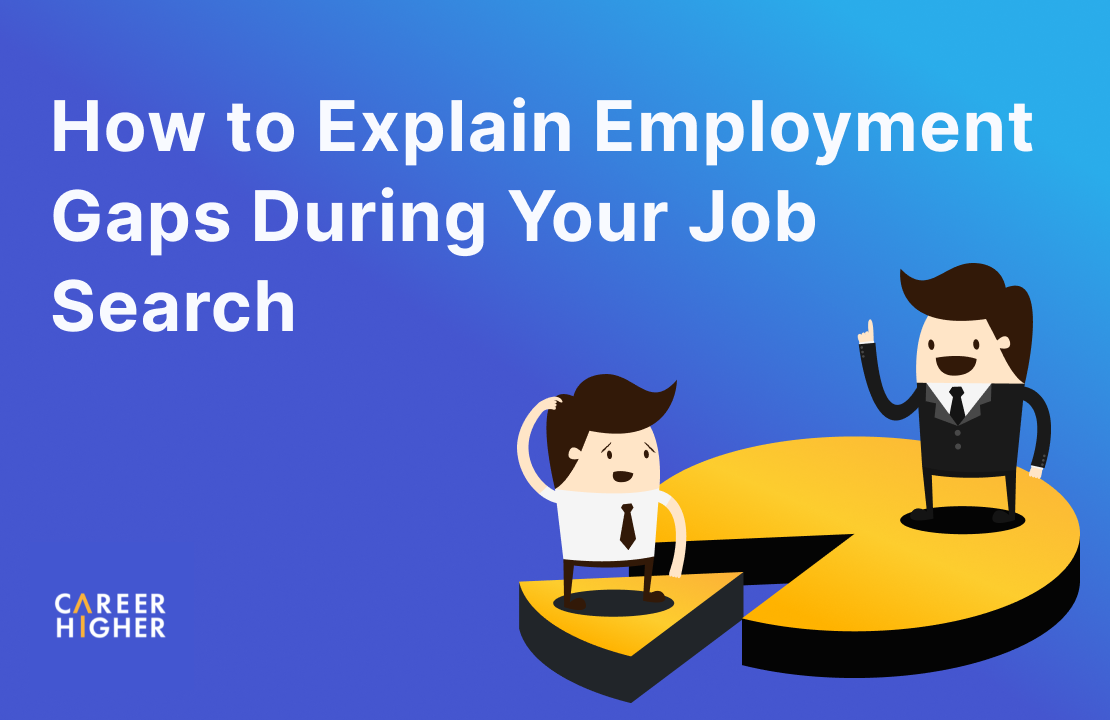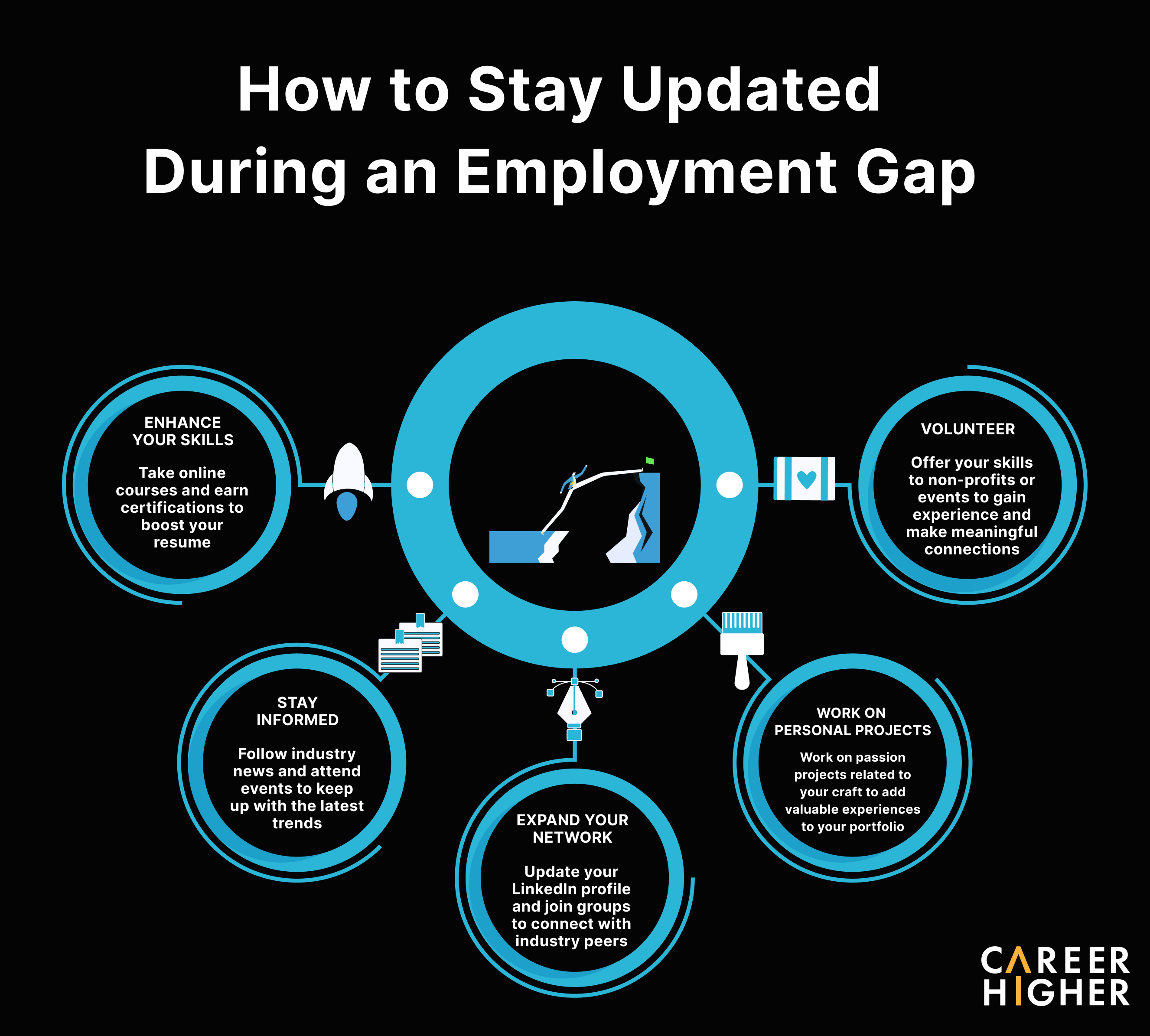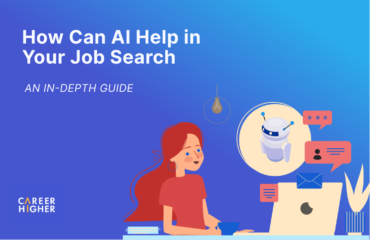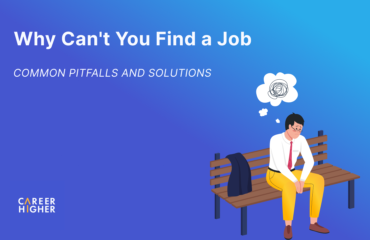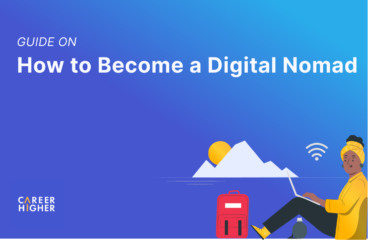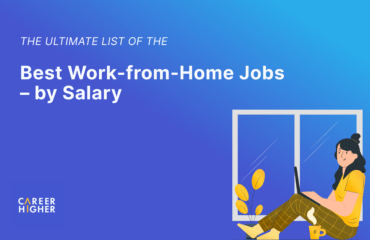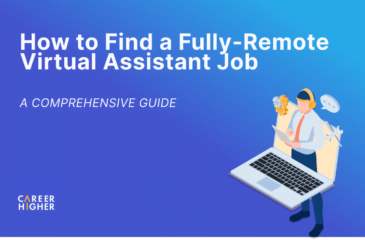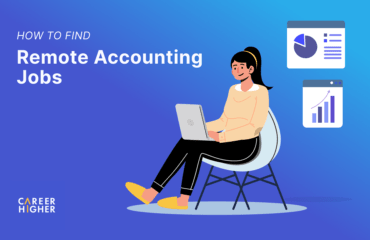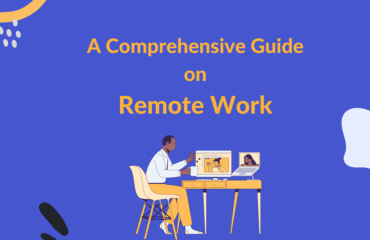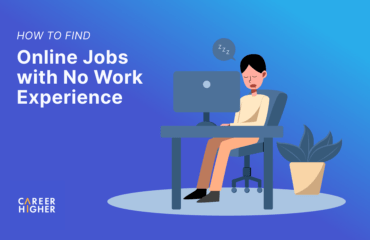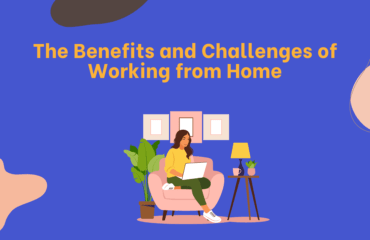Table of Contents
There are many reasons why professionals may find themselves in periods of unemployment. The pandemic and the recent wave of layoffs are some factors we’ve witnessed beyond a person’s control. However, other reasons, such as health problems, taking care of family, or pursuing goals outside work may also lead to career breaks. While these gaps are understandable, explaining them to potential employers can be daunting. However, with the right approach, you can turn a perceived drawback into a display of growth, resilience, and eagerness for new opportunities. In this article, we will guide you through understanding, preparing, and effectively explaining such employment gaps during your job search.
1) Assess the Reason for Your Employment Gap
An employment gap is a period of 6 months or more when a person is not employed in a job. Employment gaps can happen for different f reasons, each carrying its own set of challenges and opportunities for growth. Recognizing the reason behind your employment gap can help you articulate your situation to potential employers more effectively. Understanding these reasons also allows you to frame your gap in a way that highlights your resilience, adaptability, and commitment to professional growth. Let’s have a quick look at some of the most common reasons for employment gaps.
a) Dealing with Health Problems
Health should always be a priority. Your health can affect your work and vice-versa. Taking time off work to address medical conditions is both necessary and commendable. Whether it’s for mental health, physical recovery, or long-term treatment, focusing on your health demonstrates responsibility toward your well-being.
b) Taking Care of Family
Many professionals take time off work to focus on their families. Parents may take time off to raise their newborn or young children. There may also be those who want to take care of their spouses or aging parents. This period can teach invaluable skills such as time management, patience, and empathy, which are also transferable to any workplace.
c) Traveling
Some individuals choose to take a break from work to travel. Oftentimes, this decision is driven by a desire to pursue personal growth and accomplish goals outside of work. Stepping away from the routine work environment to actively seek out new experiences and challenges can lead to significant self-improvement. Whether it’s learning a new language, navigating unfamiliar situations, or immersing oneself in different cultures, these experiences can broaden your perspective and develop your skills in adaptability and communication.
d) Continuing Education or Pursuing Training
Pursuing higher education or seeking specialized training is a significant and sometimes necessary step for career progression. This is common among individuals who are changing careers or want to upgrade their skills. Whether it’s completing a degree, attending workshops, or acquiring certifications, this time away from work is an investment in your professional future.
e) Being Laid Off
This past year, layoffs in the U.S. were 98% higher than in 2022. Economic fluctuations, cost-cutting, and a shift to artificial intelligence are a few reasons why many employees have been left without work through no fault of their own. In most cases, this is out of your control. However, this time can be used for reassessing career goals, networking, and seeking new opportunities in emerging fields.
2) Transform Employment Gaps into Assets
Don’t perceive your employment gaps as barriers to your career trajectory. Instead, think of this time as a period of personal development, skill acquisition, and self-reflection. These breaks can serve as a testament to your valuable qualities such as resilience and adaptability. By strategically presenting these gaps, you can highlight your proactive efforts in personal and professional development. This approach not only shifts the focus from the gap itself but also positions you as a candidate who values continuous learning and can contribute uniquely to the workplace. Here’s how you can turn those gaps into assets:
a) Pursue Productive Activities During Long-Term Employment Gaps
If your employment gap surpasses a year, it is beneficial to pursue productive activities during this period, such as freelance projects, part-time work, or continued education. This demonstrates your commitment to staying relevant in your field despite taking a break from traditional employment. By highlighting your employment gap in this light, you are demonstrating the experience as a contributor to your personal and professional growth.
b) Add a Positive Spin to Your Employment Gaps
Not every employment gap allows for a chance to undertake additional activities. However, there may be inadvertent experiences during your employment gap that honed some of your skills and knowledge. By recognizing and leveraging these experiences, you can craft a narrative that highlights your personal and professional development. Use the below examples as a guide to positively spin employment gaps in your career documents or during interviews:
a) Taking care of family – To support my family during a critical time, I stepped back from my job to provide care. This experience honed my abilities in crisis management, multitasking, and compassionate communication. I also engaged in online workshops on emotional intelligence and conflict resolution, skills that have profoundly enriched my professional interactions and team collaboration.
b) Pursuing higher education or training – Recognizing the rapid advancements in my field, I pursued a specialized certification in [specific field/technology]. This strategic pause in my career not only strengthened my expertise but also allowed me to stay on top of industry trends and technological innovations, making me a more knowledgeable and versatile contributor.
c) Traveling – I dedicated a year to traveling in [location/s], where I strategically organized travel itineraries and immersed myself in new cultures. This experience expanded my global perspective, enhanced my interpersonal skills, and exposed me to diverse problem-solving approaches. These competencies have added a unique value to my professional skill set, enabling me to approach situations with a more creative and inclusive mindset.
d) Being laid off – The economic downturn led to an unexpected pause in my career when my previous employer implemented a company-wide restructuring. I utilized this time to reflect on my career path, engage in professional networking, and attend industry seminars. This kept me connected with the latest industry trends and allowed me to discover new opportunities.
3) Update Your Application Materials and Interview Strategy
When it comes to discussing your employment history, honesty is the best policy. Employers appreciate transparency and can usually sense when a candidate is hiding something. After you’ve assessed the reason for your employment gap, prepare a concise explanation for your gap. Make sure to focus on what you learned during that time. This preparation will help you discuss your employment gap confidently, whether on your resume, in your cover letter, or during an interview. Let’s explore how you can update your application materials and interview strategy to reflect the same.
a) Mention Your Employment Gap on Your Resume
Your resume is usually the first document where employers get a glimpse of your character. Explaining an employment gap in your resume is crucial for building trust with potential employers. To create a compelling and transparent resume, consider using a functional resume format. In a functional resume, list your skills and achievements, describing how you’ve applied those skills in previous roles. This can help emphasize your positive attributes over your employment history. If you undertook a professional certification, list it under your Education section.
Example:
Successfully completed a certification in project management,
enhancing my skills in X, Y, Z. Jun 2019 – May 2020
b) Explain Your Employment Gap In Your Cover Letter
Your cover letter is a good opportunity to address your employment gap, narrating it in a way that reflects on you positively. Dedicate a paragraph to explain your employment gap. Focus on the activities you engaged in, emphasizing how they have prepared you for the job you’re applying for. This could include volunteering, studying, freelancing, or anything you’ve done to stay active in your industry. Highlight any new skills, personal development, or volunteer work. Keep the tone positive and forward-looking, concluding with a statement that ties your activities directly to the value you would bring to the potential employer.
Example:
During my career break, I volunteered with a local non-profit, leading their marketing campaigns. This experience honed my digital marketing skills and gave me a unique perspective on customer engagement strategies, which I am excited to bring to your team.
c) Discuss Your Employment Gap During Job Interviews
Employers will almost always ask about your employment gap, so be ready to discuss it in interviews. Take it as an opportunity to discuss how your experiences during the gap make you an ideal candidate for the position. Remember, confidence and honesty are key.
Before the interview, reflect on your employment gap and prepare a concise, positive statement about it. Practice saying it out loud until you can deliver it confidently. Keep your explanation brief and positive. Immediately follow up with how the experience has prepared you for this role, focusing on the skills and insights you gained. You can steer the conversation by saying,
“This break gave me a chance to develop my skills in X and I’m excited about how I can leverage these skills to contribute to your company.”
Here’s an example response when asked about your employment gap:
After being laid off due to a company-wide restructuring, I seized the opportunity to complete an advanced course in data analytics, expanding my skill set. This not only kept me professionally sharp but has also equipped me with the latest analytical techniques that I believe are perfectly in line with the job role.
Employment gaps are not a barrier to your next job opportunity. By demonstrating your experiences in a positive light, you can reassure potential employers of your suitability for the role and readiness to return to work. If you are still unsure about how to make your next career move after a long employment gap, consult our career clarity coaches to help you figure out your best next step.
